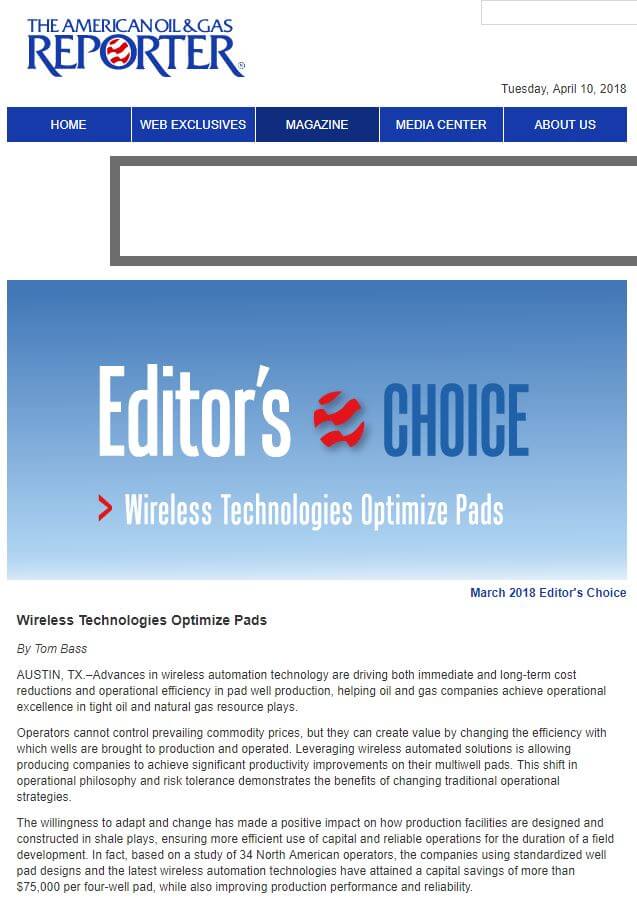For oil and gas production in shale regions, what are some ways technologies can optimize capital costs and ongoing production performance?
Emerson’s Tom Bass answers this question with many examples to back it up in a recent article, Wireless Technologies Optimize Pads, in The American Oil & Gas Reporter.
 Tom opens noting the cost reductions in capital and labor that came because of low oil prices. However, as prices recovered these cost reductions were not sustainable. He describes how oil & gas producers must relook at current engineering standards and operating practices. By doing this, well pad designs and repeatable project processes can improve project and ongoing operational performance.
Tom opens noting the cost reductions in capital and labor that came because of low oil prices. However, as prices recovered these cost reductions were not sustainable. He describes how oil & gas producers must relook at current engineering standards and operating practices. By doing this, well pad designs and repeatable project processes can improve project and ongoing operational performance.
He shares how from an operational point of view that industrial wireless sensor technologies can improve repair & maintenance, chemical usage and labor required to operate the well pad. The costs comprise nearly half of the lease operating expenses (LOE).
Tom notes that from a project capital expenditure (CAPEX) point of view that wireless measurement devices have lower costs to install and can shrink the project schedule 50-60% for the automation portion of the well pad processing equipment—well heads, separators, tanks, etc. The value of earlier production dwarfs the installation cost savings.
Use of wireless sensors helps reduce maintenance costs by eliminating some common failures including electrical grounding, terminations, wire corrosion and other electrical issues caused by the environment and work performed at the well pad over time.
He shares examples of ways to improve performance in reliability, emissions, safety and production. One example in reliability is replacing manual corrosion inspection with non-intrusive, wireless corrosion sensors for piping and vessels. A safety example includes storage tank automatic level gauging instead of manual gauging which places personnel coming to the well pad on the top of these tanks in hazardous environments on a periodic basis.
Read the article for many more examples of how these additional wireless measurements can improve safety, reliability, emissions and overall well pad production levels.
If you’ll be attending the April 30-May 3 Offshore Technology Conference (OTC) in Houston, see the technologies and oil and gas industry experts in the exhibit area in the Emerson booth #2261. Get a free pass by visiting the Offshore Technology Conference 2018 page on Emerson.com.
You can also connect and interact with other oil & gas industry and industrial wireless device experts in the Oil & Gas and Wireless groups in the Emerson Exchange 365 community.





